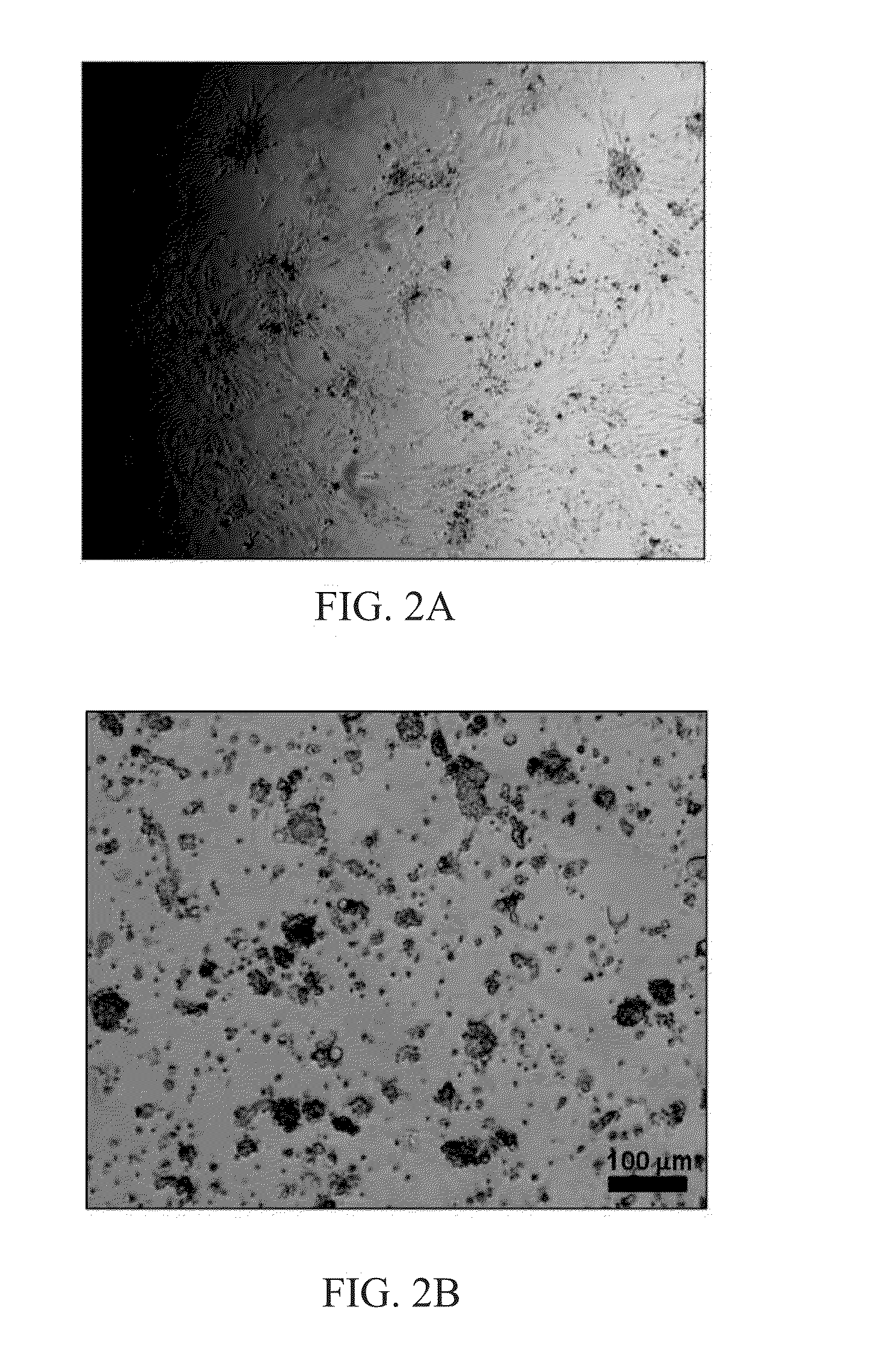Method of obtaining high purity stem cells from tissue
a stem cell and high purity technology, applied in the field of tissue stem cell extraction, can solve the problems of difficult difficult centrifugation and isolation steps, and high moral criticism of embryonic stem cells use and obtaining, etc., to achieve good stemness and differentiation ability, high purity, and effective selection of high purity target stem cells
- Summary
- Abstract
- Description
- Claims
- Application Information
AI Technical Summary
Benefits of technology
Problems solved by technology
Method used
Image
Examples
example 1
Isolate the Impurity-Containing Cell Mass from Subcutaneous Adipose Tissue
[0034]Firstly, subcutaneous adipose tissues obtained via liposuction was washed by PBS several times and cut into pieces using surgical scissors. Equal volume of 200 U / mL Type I collagenase (Sigma) / Hank's balanced salt solution (HBSS) was added and was shook in incubator at 37° C. (See Table 2 for the composition of HBSS). Centrifugation was used to remove undigested fat chunks after the incubation. Then, a cell mesh of pore diameter of 70 μm was used to give primary cells. After loaded onto culture dishes, the primary cells were then dissolved using culture medium and transferred to 75T-flask (BD Bioscience) (See Table 1 for the composition of culture medium). After the cells growth reaching about eight-tenth of the volume of the flask, 0.5% Trypsin / 2-[2-(Bis(carboxymethyl)amino)ethyl-(carboxymethyl)-amino]acetic acid (EDTA) (Gibco) was used to sub-culture the primary cells, which is referred as impurity-cont...
example 2
Obtain Target Stem Cells on the Polymeric Film by Filtering the Impurity-Containing Cell Mass Using the Matrix-Filled Cylinder Structure
[0035]The matrix was filled in the cylinder structure and was washed by PBS. The impurity-containing cell mass obtained from Example 1 was injected via an inlet on the matrix-filled cylinder structure. When the impurity-containing cell mass of Example 1 was derived from subcutaneous adipose tissue, the impurities are mostly oil drops. The flow speed was set at 0.5-2 mL / min, preferably, 1 mL / min, allowing the impurity-containing cell mass to pass through the matrix-filled cylinder structure for filtration. The filtration process lasted approximately 5 minutes.
[0036]Fluid flow through the matrix-filled cylinder structure, the impurity-free cell mass, was then collected at an outlet of the matrix-filled cylinder structure. When the impurity-containing cell mass of Example 1 was derived from subcutaneous adipose tissue, the content separates at least 50...
example 3
Growth Rate Analysis
[0039]Cells of the 1st to 15th sub-culture generations were used for the growth rate analysis. All cells were checked for the morphology by an inverted phase contrast microscope and for the proliferation (growth curve) by the DNA Hoechst 33528 dye stain assay and a fluorescence spectrophotometer with excitation at 365 nm and emission at 458 nm (Hitachi F2500). The cell doubling time was calculated from the growth curve.
[0040]Please refer to FIG. 4, the comparison of the cell doubling time, in which the subcutaneous adipose stem cells obtained via the separation of the matrix according to the method of the present invention can be long-term sub-cultured up to 10 generations or above while maintaining a steady growth rate. Since stem cells of low purity, for instance, the stem cells mixed with other cells obtained from conventional methods known to the art, show decrease in growth rate when sub-cultured, they can not be sub-cultured into too many generations. The s...
PUM
 Login to View More
Login to View More Abstract
Description
Claims
Application Information
 Login to View More
Login to View More - R&D
- Intellectual Property
- Life Sciences
- Materials
- Tech Scout
- Unparalleled Data Quality
- Higher Quality Content
- 60% Fewer Hallucinations
Browse by: Latest US Patents, China's latest patents, Technical Efficacy Thesaurus, Application Domain, Technology Topic, Popular Technical Reports.
© 2025 PatSnap. All rights reserved.Legal|Privacy policy|Modern Slavery Act Transparency Statement|Sitemap|About US| Contact US: help@patsnap.com



